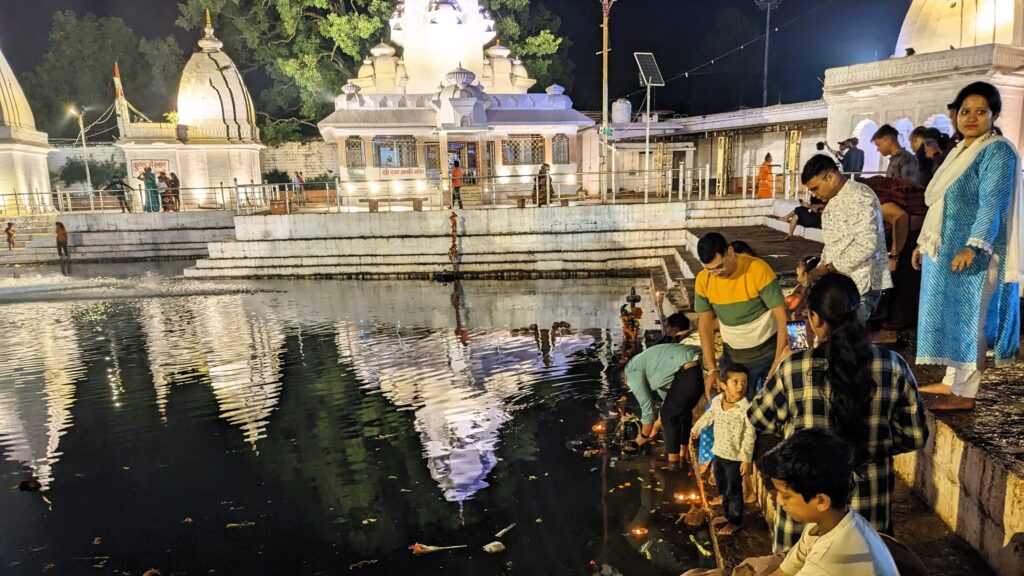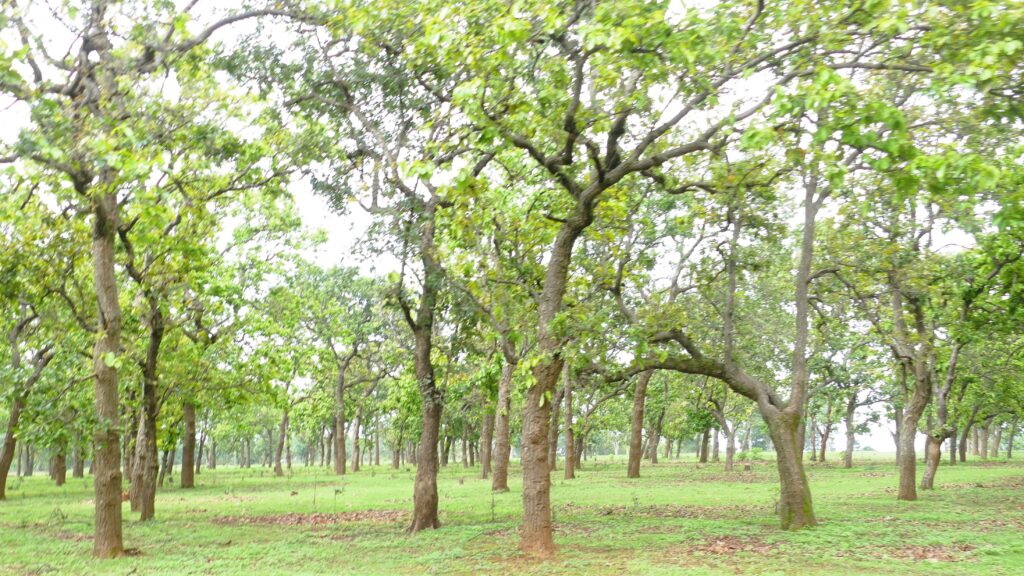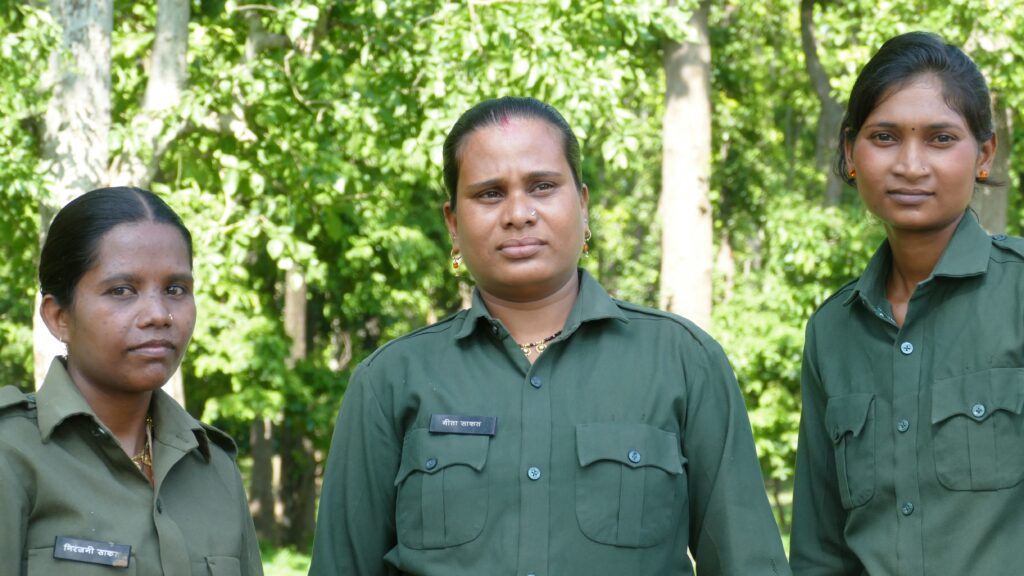After almost 15 months on the road, we have visited countless protected areas. They were large or small, renown or unknown, wild or cultivated, full of biodiversity or rather bare, but they all had their own story – and so has the Achanakmar-Amarkantak Biosphere Reserve and the Achanakmar Tiger Reserve within the Biosphere Reserve. After a detour to Southern India, we are back in Central India to meet a special person, Shreyansh Budhia. An economist by education, his real passion is nature conservation and he spends most of his time and energy protecting local biodiversity all around his hometown of Bilaspur in the state of Chhattisgarh. So, when we meet him in Bilaspur, he immediately takes us on a trip to Achanakmar-Amarkantak Biosphere Reserve north of Bilaspur to learn about the problems this place faces and the people that protect it. We are accompanied by Mr. Kaushik, a retired forest range officer that used to be responsible for the area of the biosphere reserve and still dedicates his time to protecting its nature.

The demise of the Narmada River
Our first stop in the biosphere reserve is the town of Amarkantak, which is famous as the source of the Narmada River, one of the most holy rivers in Hinduism. Due to its religious significance, it has many temples and is visited by tens of thousands of pilgrims, often as part of the ‘Narmada Parikrama’, a traditional pilgrimage along the Narmada. Here we meet Onkar Giri Goswami, another retired forest department official. He tells us that in the 1960s, Amarkantak was a small town with only 1000 inhabitants. But tourism in India has been on the rise since then and the number of visitors in Amarkantak has exploded. This does not only lead to pollution, but also to uncontrolled development. Around the temples and other holy places, food stalls, street vendors, restaurants, hotels and ashrams have mushroomed. Naturally, this also means that all the people working at these places have moved to Amarkantak. While both constructions and livelihoods were temporary at first, they became permanent over time. Until today, the town has grown to 10.000 inhabitants and most surfaces around the holy water bodies have been sealed by buildings.

The increase in water use, soil sealing and forest degradation had immense impact on the seven small streams that make up the source of the Narmada in and around Amarkantak. Six out of seven have turned from permanent rivers to seasonal ones. During dry season, the water quality drastically worsens and water temperature rises threatening aquatic life. This is not a new phenomenon, but already started in the 1980s. The town council reacted in 1986 by banning construction within 300m of any water body, but unfortunately that ban was never enforced. Luckily it was not completely forgotten and in 2021, local activists filed a case at the Indian Supreme Court to finally enforce this ban. The supreme court agreed and the ban is now finally active.

When we travel around Amarkantak, we see that a lot of forest is being turned into fields and pastures for cattle. This deforestation decreases the water storage capacity of the soil and vegetation, contributing to droughts during dry season. To make things worse, many of the pastures cannot even be used before they are overgrown by invasive Lantana plants that threaten natural habitats all over India.

Livestock does not belong in the forest
The deforestation is partly driven by a major issue that impacts biodiversity, water use, forest cover and wildlife in the reserve: cattle grazing. Cattle rearing is a multi-faceted topic in India. On one hand, cows are the holiest animal of Hinduism, worshipped by most Indians and hence their meat is rarely eaten. On the other hand, India is the biggest consumer of milk in the world and parallelly so densely populated, that there is little space for dedicated cattle pastures. Crossing India, we see most cows grazing on small patches of grass or plants in between fields, buildings and roads or even regularly feeding on trash. We constantly wonder where all the cows are that are necessary to produce all this diary, how they are milked and what happens to them after they stop giving milk since they cannot be killed according to Hindu believes. We learn part of the answer here in Achanakmar: When cows do not give enough milk anymore, they are apparently often given to herders that take care of them until they die naturally. But since these cows do not create any revenue, the herders also do not have money to feed them with fodder or by grazing on private land. The solution: herding them into public land and even protected areas.




Livestock grazing is forbidden in most parts of protected areas, but often this ban is not enforced. We already witnessed this issue in Suhelwa Wildlife Sanctuary, but the problem is multiplied here. The open forest floor reveals that is heavily grazed. According to official numbers, the reserve is 95% forested, but we quickly realize that much of this is not dense, biodiverse jungle but rather pastures with scarce tree cover. According to studies, grazing inside the forest reduces the wild ungulate population due to competition and disturbance. This also impacts tigers, leopards and striped hyena by taking away their natural prey and creating conflicts with herders as predators attack on livestock are common in the reserve.
Disturbance, habitat degradation and human-tiger-conflict drastically decreased the tiger population in Achanakmar tiger reserve. After the population was estimated at 12 individuals in 2017, only 5 residential tigers have been found in the last survey.
How to support communities inside the reserve?
Achanakmar is not only home to wildlife, but also many rural communities. There are 418 villages within the biosphere reserve, 18 of them even inside the core zone of the tiger reserve. One of the most important management tasks is to secure their livelihoods while minimizing negative impacts on nature. Many of the communities have lived in these forests for hundreds of years and play a big role in protecting them. But Shreyansh also tells us that not all the people are indigenous, some moved into the forests of Achanakmar from other parts of India during and after the British rule. The Brits started logging in Achanakmar as they did all over India and needed workers to first build the infrastructure like railways and then log the trees. As this area was rather sparsely inhabited, they brought in workers from densely populated areas like Uttar Pradesh that created new villages around the logging camps and railway tracks. These people from the start earned a living by exploiting the forest and have a different attitude towards the forest than the tribal communities that value the forest for all the things it offers like food, firewood and medicine.


In a small village in the tiger reserve, we meet three women that tell us about an initiative to create income for local women that often take care of the household and farm, but earn no money. They are part of a group of seven women that got hired as forest guides after receiving training in spotting wildlife like barking deer, spotted deer, gaurs and wild boars. Being guides not only creates some income for them, but also improves ecotourism offers in Achanakmar.
We initially used to run at the sight of men, even forest rangers. Today, we face our colleagues with confidence that we’ve developed because of the exposure we get from our work. Being forest guides comes organically to us as we have been born and grew up in the same forest.
Parmeshwari, female forest guide in Achanackmar to Mongabay
”We enjoy our job very much, and we would like to do other tasks for the forest department as well,” they tell us. Their current income is a good start, but not enough to earn a living. They only earn about 3€ plus tips per safari, which costs visitors 40€, and there are no safaris during rainy season. While it is a small step, it is an important first step for these women in a society, where women usually do not work and face a lot of prejudices about their competence.
The unknown future of Achanakmar
Achanakmar is in many ways representative for many small protected areas in India. While some national parks have gained international reputation for wildlife spotting, many reserves are neglected by decision makers, resulting in bad management. For us personally, this is the last reserve we visit in India, and its story resonates with what we have experienced in Suhelwa Wildlife Sanctuary, the very first reserve we saw in this country.
In between, we visited the world-renown Gir National Park, the home of the last Asiatic lions, which has enough money and staff to monitor it closely and is a poster child for wildlife tourism in India. To us, Achanakmar and Suhelwa feel much more like the ‘real’ India that faces many socio-economic issues, but whose inhabitants have a huge love for nature. Many people here do not choose to exploit nature, but they have no other means to earn money. And in a system where corruption is rampant and public authorities are often understaffed or compromised, management of protected areas and natural resources is often neglected or toothless. But no matter where we went and how much locals in those places were struggling, we always felt how greatly they love nature. We were deeply impressed how some dedicate their lives to protecting their local biodiversity. In this country in transition, we hope that these voices will be heard and the natural wonders of India will be safeguarded for future generations.

